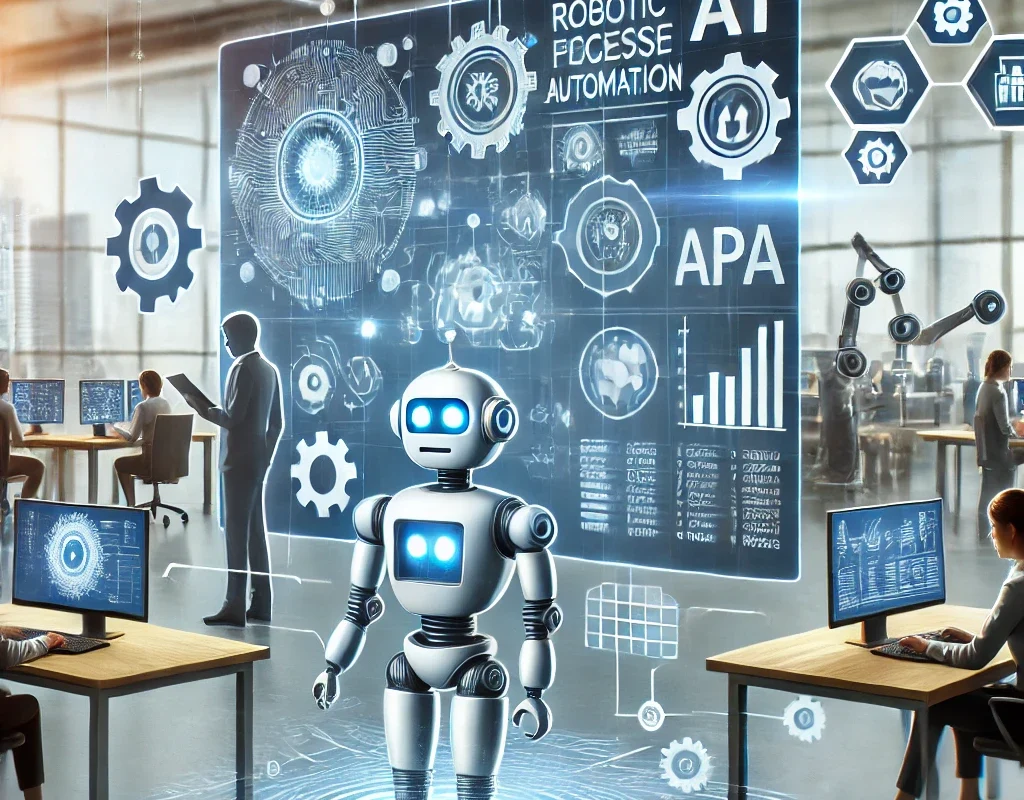In today’s fast-paced digital world, businesses are constantly looking for ways to optimize operations, reduce manual intervention, and scale efficiently. One of the most effective strategies to achieve these goals is through the automation of business processes using machine learning. This not only boosts productivity but also provides real-time insights that are crucial for decision-making.
Introduction
Business process automation (BPA) is transforming industries by replacing repetitive manual tasks with intelligent systems that can learn and adapt. Machine learning, a subset of artificial intelligence (AI), enables these systems to analyze data, identify patterns, and make decisions without human intervention. The integration of machine learning in business process automation is leading to enhanced efficiency, cost reduction, and improved accuracy across various sectors.
In this article, we’ll explore how machine learning is being used to automate business processes, the benefits it offers, and the steps to implement these technologies in your organization. We will also discuss some real-world examples, challenges to overcome, and best practices for successful automation.
What Is Business Process Automation (BPA)?
Business process automation refers to the use of technology to perform tasks that would otherwise require human intervention. Automation can range from simple tasks, such as sending emails, to complex workflows involving multiple departments. With the rise of machine learning, BPA has evolved into a more intelligent system that not only automates but also improves processes over time by learning from data.
Understanding Machine Learning in the Context of Business
Machine learning involves training algorithms to recognize patterns in data and make predictions or decisions without explicit programming. When applied to business processes, machine learning allows systems to handle tasks such as data analysis, customer service, and predictive maintenance with minimal human involvement.
Machine learning models can be categorized into supervised learning, unsupervised learning, and reinforcement learning, each serving different purposes based on the type of data and the specific business needs.
The Benefits of Using Machine Learning for Automation
Automating business processes using machine learning offers numerous benefits. Here are a few key advantages:
- Increased Efficiency: Machine learning models can handle tasks at a speed and accuracy that far exceeds human capabilities.
- Cost Reduction: Automating repetitive tasks reduces the need for manual labor, leading to cost savings.
- Improved Decision-Making: Machine learning algorithms analyze large volumes of data, providing insights that help businesses make informed decisions.
- Scalability: Machine learning models can scale with business growth, allowing companies to handle more processes without increasing operational costs.
- Personalization: In customer-facing processes, machine learning can create personalized experiences based on individual behavior and preferences.
Key Areas for Automation Using Machine Learning
Machine learning can be applied to various business processes, depending on the industry and operational needs. Here are some common areas where machine learning is making an impact:
- Customer Service Automation: Chatbots and virtual assistants powered by natural language processing (NLP) can handle customer inquiries, resolve issues, and provide 24/7 support.
- Predictive Maintenance: Machine learning algorithms analyze equipment data to predict when maintenance is needed, reducing downtime and extending equipment life.
- Supply Chain Management: By analyzing demand patterns, machine learning models can optimize inventory levels, reduce waste, and improve delivery times.
- Human Resource Automation: Machine learning can streamline recruitment processes by screening resumes, scheduling interviews, and even predicting employee attrition.
- Fraud Detection: Machine learning models analyze transactional data to identify unusual patterns that may indicate fraudulent activity.
- Marketing Automation: ML algorithms can segment audiences, optimize ad spending, and personalize marketing campaigns for higher engagement.
Steps to Automate Business Processes Using Machine Learning
1. Identify the Right Processes for Automation
Not all business processes are suitable for automation. Start by identifying repetitive, data-driven tasks that can be standardized. These are typically low-value tasks that consume time but do not require complex human judgment.
2. Collect and Clean Data
Machine learning models require large datasets to learn from. Ensure that you have access to relevant data, and focus on cleaning and organizing it to ensure accuracy. High-quality data is essential for training effective machine learning models.
3. Choose the Right Machine Learning Model
Depending on the type of process you want to automate, you can select from different machine learning models, such as classification models for decision-making or regression models for forecasting. It’s important to match the model to your specific needs.
4. Train and Test the Model
Once you have selected a model, the next step is to train it using your dataset. After training, the model should be tested with new data to evaluate its accuracy and make adjustments if necessary.
5. Deploy the Model and Monitor Performance
After successfully testing the model, deploy it within your existing systems. Regularly monitor its performance to ensure it continues to meet your expectations, and update the model as needed to adapt to changing conditions.
Real-World Examples of Machine Learning in Business Automation
Amazon’s Supply Chain Optimization
Amazon uses machine learning to forecast demand, manage inventory, and streamline its vast supply chain network. The company’s ML models analyze historical sales data to predict product demand and optimize shipping routes, reducing delivery times and costs.
Netflix’s Content Personalization
Netflix leverages machine learning to recommend content based on users’ viewing habits. This personalized approach has been a key factor in enhancing user engagement and satisfaction on the platform.
PayPal’s Fraud Detection System
PayPal uses machine learning algorithms to monitor transactions in real time and detect potential fraud. The system analyzes millions of transactions daily to identify unusual patterns, helping the company prevent fraudulent activities before they occur.
Challenges in Implementing Machine Learning for Automation
While machine learning can greatly improve business process automation, there are several challenges to consider:
- Data Quality: Poor-quality data can lead to inaccurate predictions, undermining the effectiveness of machine learning models.
- High Initial Costs: Setting up machine learning systems requires significant investment in both technology and skilled personnel.
- Complexity: Implementing machine learning requires expertise in data science, which may not be readily available in all organizations.
- Ethical Considerations: Automation, especially in areas like hiring or customer service, may raise ethical concerns related to fairness and bias.
You can also read; How to Use AI for Predictive Analytics in Real-World Applications
Best Practices for Automating Business Processes Using Machine Learning
Start Small and Scale Gradually
Begin by automating simple processes and gradually expand as you become more comfortable with machine learning technologies. This allows you to minimize risks and costs while gaining valuable experience.
Focus on High-Impact Areas
Target processes that are critical to your business operations and can provide the most value when automated. This ensures that your investment in machine learning yields substantial returns.
Invest in Training and Support
Ensure that your team is well-trained in the use of machine learning tools and techniques. Regularly provide support to help them stay up to date with the latest advancements.
Monitor and Update Models
Machine learning models should not be set and forgotten. Continuously monitor their performance and update them as needed to ensure they remain accurate and relevant.



